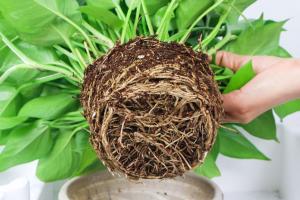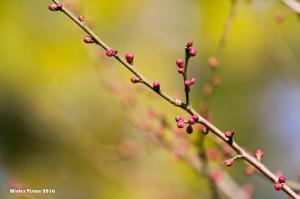Introduction
Seed plants, such as trees and flowers, have adapted various methods to reproduce. However, the one that stands out the most is the use of pollen in pollination. Pollen helps seed plants reproduce without the need for water, which is essential for their survival. In this article, we will discuss how pollen works in the reproduction of seed plants.
The Role of Pollen
Pollination is the transfer of pollen from the male reproductive organ (stamen) to the female reproductive organ (pistil) of a flower. Pollen carries the male gamete that fertilizes the female gamete, eventually leading to the formation of a seed. Pollen is produced by the stamen and contains the male reproductive cells called sperms. The structure of pollen varies in different plant species, but it is usually a larger cell known as the vegetative nucleus and two smaller sperm cells.
Cross-Pollination and Self-Pollination
Seed plants can either self-pollinate or cross-pollinate. Self-pollination occurs when pollen from the same plant fertilizes the pistil. Conversely, cross-pollination occurs when pollen from a different plant of the same species fertilizes the pistil. Cross-pollination is essential for genetic diversity, which can lead to stronger and healthier plants.
Pollinators
The transfer of pollen can be done by wind or insects known as pollinators. Insect pollinators include bees, butterflies, wasps, and ants. These insects are attracted to flowers by their color, scent, and nectar. As they land on the flower to collect nectar, pollen sticks on their body. The pollen is then transported to the next flower they visit, thus facilitating cross-pollination.
Pollen Tubes
Once the pollen lands on the stigma of the pistil, it begins to grow a pollen tube. The pollen tube penetrates the style of the pistil and reaches the ovary where the egg cell is located. The sperm cells inside the pollen tube are released and fertilize the egg cell leading to the formation of a seed.
Conclusion
In conclusion, pollen plays a critical role in the reproduction of seed plants by facilitating pollination. It contains the male gamete that fertilizes the female gamete, leading to the formation of a seed. Pollinators and wind assist in the transfer of pollen from the stamen to the pistil. By understanding the role of pollen in the reproduction of seed plants, we can appreciate and promote their continued existence.

 how many times do yo...
how many times do yo... how many planted tre...
how many planted tre... how many pine trees ...
how many pine trees ... how many pecan trees...
how many pecan trees... how many plants comp...
how many plants comp... how many plants can ...
how many plants can ... how many plants and ...
how many plants and ... how many pepper plan...
how many pepper plan...



























